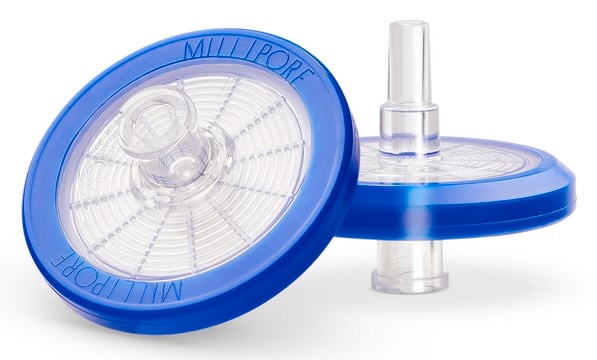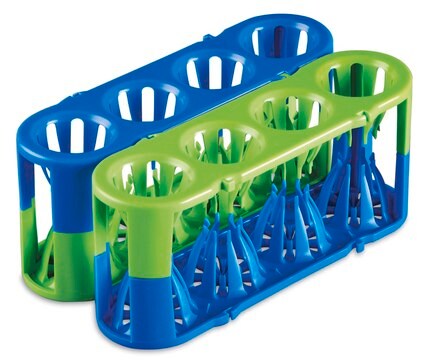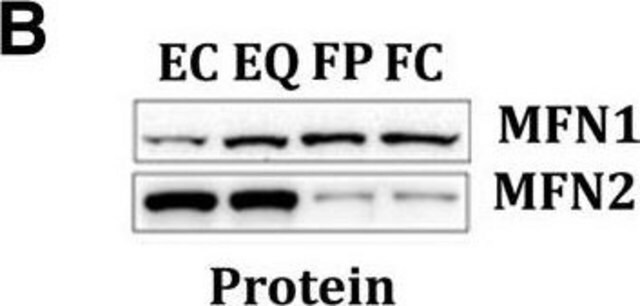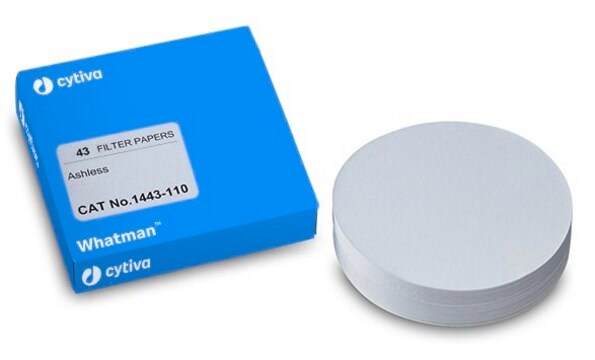HTS099M
ChemiSCREEN Membrane Preparation Recombinant Human EP1 Prostanoid Receptor
Human EP1 GPCR membrane preparation for Radioligand binding Assays & GTPγS binding.
Anmeldenzur Ansicht organisationsspezifischer und vertraglich vereinbarter Preise
Alle Fotos(1)
About This Item
UNSPSC-Code:
41106514
eCl@ss:
32161000
NACRES:
NA.41
Empfohlene Produkte
Allgemeine Beschreibung
Full-length human PTGER1 cDNA encoding EP1
Prostanoids are a series of arachidonic acid metabolites produced by the action of cyclooxygenase and subsequently by isomerases and synthases. Cells rapidly secrete prostanoids after synthesis, whereupon the prostanoids bind to a family of 8 GPCRs to exert their biological effects (Narumiya and FitzGerald, 2001). The prostaglandin PGE2 causes pain, vasodilation, immunosuppression of T cells, bone resorption and promotion of carcinogenesis. Four related GPCRs, EP1, EP2, EP3 and EP4, each bind to PGE2, but the different G protein coupling status of each receptor leads to distinct biological effects; EP1 couples primarily to Gq to mobilize intracellular calcium. EP1 appears to mediate the effects of PGE2 in promoting formation of precancerous lesions in animal models of colon cancer (Watanabe et al., 1999). In addition, EP1 has an inhibitory effect on stress-induced aggressive and risk-taking behaviors in mice (Matsuoka et al., 2005). Millipore′s EP1 membrane preparations are crude membrane preparations made from our proprietary stable recombinant cell lines to ensure high-level of GPCR surface expression; thus, they are ideal HTS tools for screening of agonists and antagonists of EP1. The membrane preparations exhibit a Kd of 14.5 nM for [3H]-PGE2. With 40 nM [3H]-PGE2, 10 μg/well EP1 Membrane Prep typically yields greater than 3-fold signal-to-background ratio.
Anwendung
Human EP1 GPCR membrane preparation for Radioligand binding Assays & GTPγS binding.
Radioligand binding assay and GTPγS binding
Biochem./physiol. Wirkung
GPCR Class: A
Protein Target: EP1
Target Sub-Family: Prostanoid
Qualität
Table 1. Signal:background and specific binding values obtained in a competition binding assay with EP1 membrane prep.
SPECIFICATIONS: 1 unit = 10 μg membrane preparation
Bmax: 4.6 pmol/mg
Kd: 14.5 nM
| 10 µg/well | |
|---|---|
| Signal:Background | 4.3 |
| Specific Binding (cpm) | 724 |
SPECIFICATIONS: 1 unit = 10 μg membrane preparation
Bmax: 4.6 pmol/mg
Kd: 14.5 nM
Spezifikationen
Inucbation Conditions
Membranes are mixed with radioactive ligand and unlabeled competitor (see Figures 1 and 2 for concentrations tested) in binding buffer in a nonbinding 96-well plate, and incubated for 1-2 h. Prior to filtration, an FC 96-well harvest plate (Millipore cat. # MAHF C1H) is coated with 0.33% polyethyleneimine for 30 min, then washed with 10mM MES, pH 6, 1mM EDTA, 10mM MnCl2. Binding reaction is transferred to the filter plate, and washed 3 times (1 mL per well per wash) with Wash Buffer. The plate is dried and counted.
Binding buffer: 10mM MES, pH 6, 1mM EDTA, 10mM MnCl2, filtered and stored at 4°C
Radioligand: [3H]- PGE2. (Perkin Elmer # NET-428 )
Wash Buffer: 10mM MES, pH 6, 1mM EDTA, 10mM MnCl2, filtered and stored at 4°C.
One package contains enough membranes for at least 200 assays (units), where a unit is the amount of membrane that will yield greater than 3-fold signal: background with 3H labeled PGE2.
Membranes are mixed with radioactive ligand and unlabeled competitor (see Figures 1 and 2 for concentrations tested) in binding buffer in a nonbinding 96-well plate, and incubated for 1-2 h. Prior to filtration, an FC 96-well harvest plate (Millipore cat. # MAHF C1H) is coated with 0.33% polyethyleneimine for 30 min, then washed with 10mM MES, pH 6, 1mM EDTA, 10mM MnCl2. Binding reaction is transferred to the filter plate, and washed 3 times (1 mL per well per wash) with Wash Buffer. The plate is dried and counted.
Binding buffer: 10mM MES, pH 6, 1mM EDTA, 10mM MnCl2, filtered and stored at 4°C
Radioligand: [3H]- PGE2. (Perkin Elmer # NET-428 )
Wash Buffer: 10mM MES, pH 6, 1mM EDTA, 10mM MnCl2, filtered and stored at 4°C.
One package contains enough membranes for at least 200 assays (units), where a unit is the amount of membrane that will yield greater than 3-fold signal: background with 3H labeled PGE2.
Physikalische Form
Liquid in packaging buffer: 50 mM Tris pH 7.4, 10% glycerol and 1% BSA with no preservatives.
Packaging method: Membrane protein was adjusted to the indicated concentration in packaging buffer, rapidly frozen, and stored at -80°C.
Packaging method: Membrane protein was adjusted to the indicated concentration in packaging buffer, rapidly frozen, and stored at -80°C.
Lagerung und Haltbarkeit
Store at –70°C. Product is stable for at least 6 months from the date of receipt when stored as directed. Do not freeze and thaw.
Rechtliche Hinweise
CHEMICON is a registered trademark of Merck KGaA, Darmstadt, Germany
Haftungsausschluss
Unless otherwise stated in our catalog or other company documentation accompanying the product(s), our products are intended for research use only and are not to be used for any other purpose, which includes but is not limited to, unauthorized commercial uses, in vitro diagnostic uses, ex vivo or in vivo therapeutic uses or any type of consumption or application to humans or animals.
Lagerklassenschlüssel
12 - Non Combustible Liquids
WGK
WGK 2
Flammpunkt (°F)
Not applicable
Flammpunkt (°C)
Not applicable
Analysenzertifikate (COA)
Suchen Sie nach Analysenzertifikate (COA), indem Sie die Lot-/Chargennummer des Produkts eingeben. Lot- und Chargennummern sind auf dem Produktetikett hinter den Wörtern ‘Lot’ oder ‘Batch’ (Lot oder Charge) zu finden.
Besitzen Sie dieses Produkt bereits?
In der Dokumentenbibliothek finden Sie die Dokumentation zu den Produkten, die Sie kürzlich erworben haben.
Unser Team von Wissenschaftlern verfügt über Erfahrung in allen Forschungsbereichen einschließlich Life Science, Materialwissenschaften, chemischer Synthese, Chromatographie, Analytik und vielen mehr..
Setzen Sie sich mit dem technischen Dienst in Verbindung.








